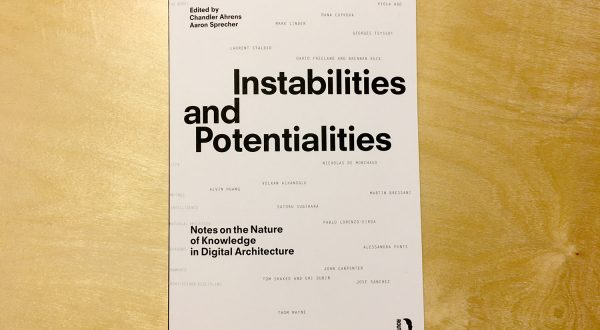MiMo MOOd
MiMo MOOd manifests the synergy between form and atmosphere as a prerequisite for an architecture of affect. As a tribute to the work of Miami Modernism and its world acclaimed instigator, architect Morris Lapidus, MiMo MOOd aims at reconsidering the nature of ornament that is not any longer considered as an add-on but instead embodies all aspects of the architectural object. The ornament plays concurrently the role of structure, skin, and sign. Revealing the richness of ornamental details that are intricately part of the architectural history of Miami, MiMo MOOd is based on a series of customized polycarbonate profiles that simultaneously recall Lapidus’ “woggles” and the striated façade that now exemplifies Miami as a laboratory of contemporary architecture. The synergy between both morphologies – the curvilinear and orthogonal lines – generates a space that is both experienced from inside and outside the prismatic volume. The affective dimension of the object stems from the movement of the viewer that continuously reveals and defeats the contained Lapidus-like flower. This flickering back and forth movement between the curvilinear shape and the external prism generates an affective condition by which the memorization and association of images reveals the ethereal interior of the pavilion. This condition is intensified by integrating a backlit platform on which the polycarbonate profiles are mounted, therefore contributing to the dematerialization of the object, or as the French philosopher Georges Bataille puts it, “the performative force of the formless.” (Georges Bataille, Manet (New York: Rizzoli, 1983), p. 95) MiMo MOOd is an architectural interface that expresses the formless quality of atmosphere as the result of clearly defined formal operations. The oscillating movement between the crystal and the cloud, the prism and the curve, the physical and virtual perception of the object contributes to the emergence of an architecture of affect that fuses figure and ground into a provisional space of transformative movements. Deformation, reformation, transformation represent as many operations triggered by the movement of the viewer yet most importantly such movement stands at the core of this architecture of rhythmic variations. Such variations not only decompose and recompose seamlessly the inherent symmetry of the object – its formal nature – but also offer a critical dimension by which formal operations and abstract materiality, mathematical protocols and sensorial perceptions, morphology and mood collide into an architecture of continuity or what we define as an architecture of formless atmosphere.
Client Dawntown – History Miami Museum
Design team Open Source Architecture (C. Ahrens, E. Neuman, A. Sprecher)
Design 2012
Construction Ongoing

